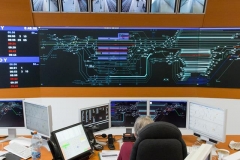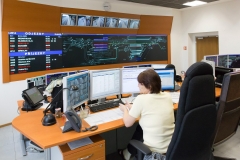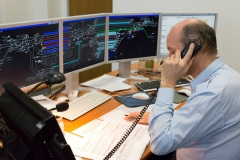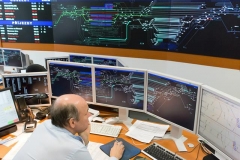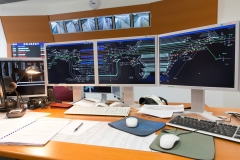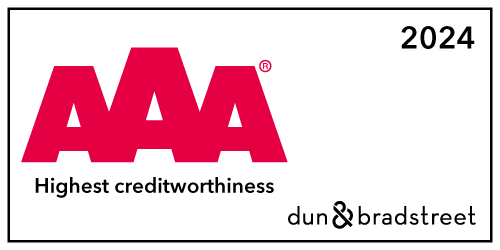The Radiovoice 3 dispatching system builds on previous dispatching systems developed by DCom, spol. s ro and further expands their possibilities. It is intended for use in large companies in the field of transport and industry, as well as in government departments such as fire brigades, rescue corps, etc. The system uses standard protocols in the environment of IP networks and enables cooperation with other applications according to customer requirements.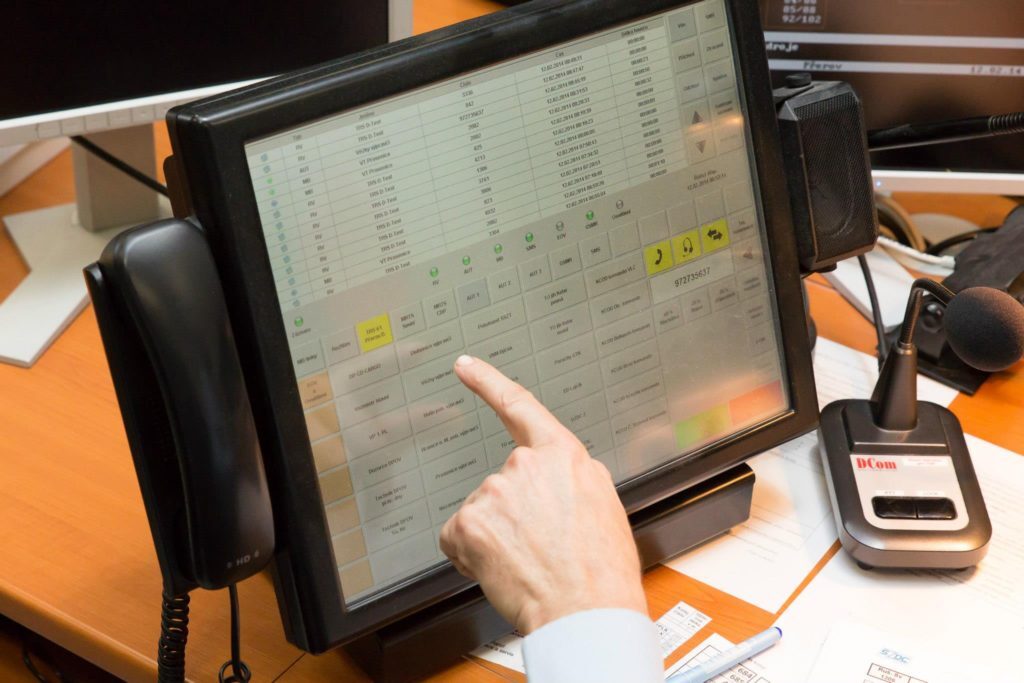
The system offers a complete solution for dispatching workplaces using VoIP communication. Individual dispatching workplaces and communication devices can be located over a large area (region, state) and interconnected by all means enabling data transmission in the IP area. The system enables the connection of a wide range of communication means used in dispatch control, such as radio stations, telephones, MB telephones, local radios and GSM gateways. Dispatchers operating the system can share and use connected devices at the same time, communicate with each other, represent each other. In this way, control networks consisting of local dispatching offices and a central dispatcher are formed. Thanks to the flexibility and availability of IP networks, the system enables quick and easy relocation of control rooms, which is advantageous when solving demanding situations.
The main advantages of the integrated communication system RV3
- Comprehensive system of remote control, management and communication for
dispatching use - Communication in IP environment using standard protocols
- Possibility of configuration and expansion of the system according to customer requirements
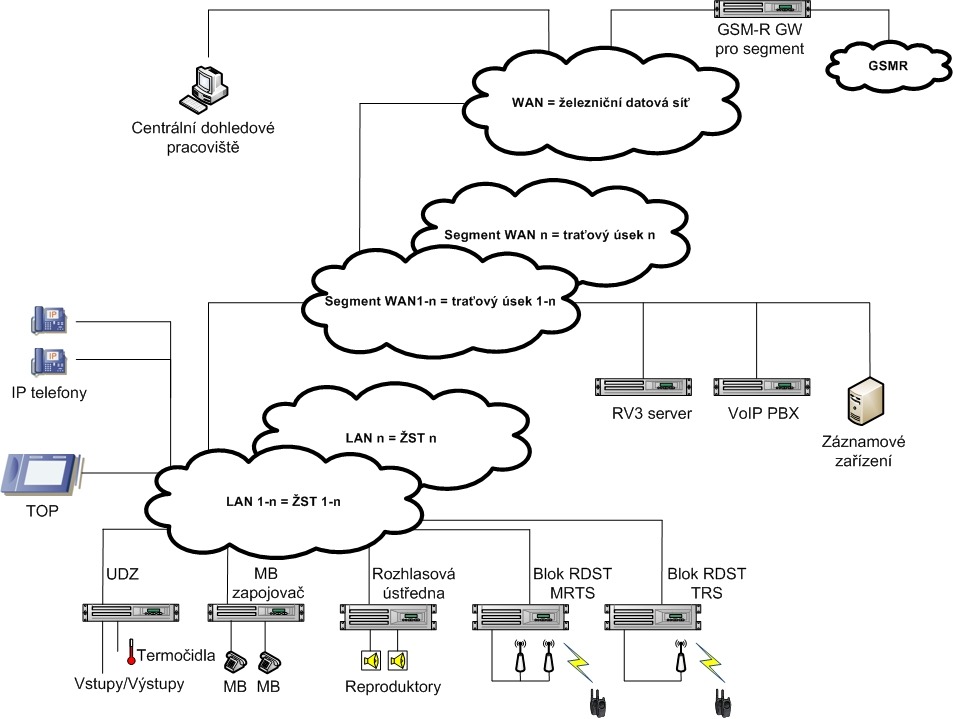 Basic technical description of the RV3 dispatching system
Basic technical description of the RV3 dispatching system
The basic elements of the integrated dispatching system are Radiovoice server, Radiovoice client, controlled communication devices and support devices. Each dispatcher has his own TOP control station with the Radiovoice client application, which mediates control and communication with selected communication devices. The Radiovoice server manages and mediates communication between client applications and individual communication devices. Provides connection control and authenticates access to the system.
Communication device
The communication devices form the final power parts of the system, which convert the server-mediated requests into power outputs. This group consists of remotely controlled radio stations , remotely controlled MB switches, remotely controlled local radio exchanges and telephone exchanges . The support devices of the whole system are used for recording voice communication , communication with other systems such as the system of automatic announcements for local radio, power supply of individual devices and remote monitoring and control.
Dispatching workplace TOP
The radiovoice client served by the dispatcher from the TOP workplace connects to the Radiovoice server and this mediates control and communication with remotely controlled radio stations, MB switches and radio, it also connects to the VoIP telephone exchange for regular telephone connections. The radiovoice server ensures the coordination of the work of individual dispatchers with communication devices, so that there can be no simultaneous access of more than one dispatcher to one communication device and thus the ambiguity of communication from the dispatcher. In the opposite direction, the dispatcher chooses which output of the communication device he wants to listen to, or he can also listen to the communication of other dispatchers. Furthermore, the system periodically checks the connection with individual communication devices and notifies the dispatcher via a client application in the event of a connection or function failure. The dispatcher thus has the opportunity to use another method of communication operatively. Confirmation of the required change (eg radio channel switching) is sent directly to the client application by the relevant communication device. Therefore, it is not possible for the client application to display a different state than the currently correct state of the communication device.
Communication record
All communication is recorded. Recordings obtained in this way are stored both in individual exchanges (for telephones) and servers (for other communications), as well as on the recording device . This allows both the playback of recordings by the dispatchers themselves and their safe storage in case of additional need. In the event of a fault and it is not possible to communicate with any of the communication devices for a long time through dispatch control, it is possible to control this device locally and to record traffic. Thanks to the use of VoIP technology, after the initial encoding of voice into digital form, its quality does not deteriorate during transmission in the network.
Remote monitoring and system administration
All elements of the integrated dispatching system allow (using the standard SNMP protocol)
remote monitoring of its operational status and thus integration into the central surveillance system. The function of the uniform time system is ensured for all elements of the integrated dispatching system by the integration of real-time circuits and the NTP protocol is used for synchronization. All communication with the monitoring system (both current status and operational history record) is marked by this uniform time
Basic elements of the Radiovoice RV3 system
1. Radiovoice server
The radiovoice server is the basic control part that mediates the connection between clients and communication devices. At least one is required for each independent control room or line section. It is typically located in a rack along with other network infrastructure.
2. Dispatching workplace TOP
The TOP dispatching workplace represents the user part of the system, enabling the dispatcher’s access to the system, it is typically formed by a computer with a touch screen, but it can be replaced by e.g. laptop if an emergency is needed. It is needed for every dispatcher workplace.
3. VoIP PBX – telephone exchange
VoIP PBX enables VoIP telephony within the system
Radiovoice 3. At least one is needed for each independent dispatch control unit. It is placed in a rack together with other telecommunication technology.
4. RDST block – radio station
The RDST abbreviation unit is a terminal communication device enabling the connection of one or two radio stations to the Radiovoice 3 system. It is placed in a rack together with other communication devices in a remote location. The number of RDST blocks is determined by the need for transport technology of the given locality.
5.MB connector
MB connector is terminal communication device used to transfer signals from MB phones to IP space. It is placed in a rack together with other communication devices in each place where the individual MB circuits converge.
6. Radio exchange
The radio exchange is terminal communication device used to connect the speakers of the local radio system. It is placed in a rack together with other communication devices in every place where local radio needs to be implemented.
7. Remote monitoring source
A remote monitoring source is a support device that serves for powering individual components of the Radiovoice 3 system.
8. Universal surveillance equipment
Universal monitoring equipment allows remote monitoring and control of Radiovoice system components 3.
9. GSM-R Gateway
GSM-R Gateway is a gateway that allows you to ensure communication between the GSM-R network and the control workstations of the TOP integrated dispatching systems.
10. RV3 block TRS-IP
The RV3 block TRS-IP is a part of the system that provides communication in the analog track system TRS.
11. RecorDat digital recording device
RecorDat digital recording device serves for recording the archiving of calls and data information taking place on various types of telecommunications equipment, e.g. analog and digital lines, digital exchanges and VoIP phones.

